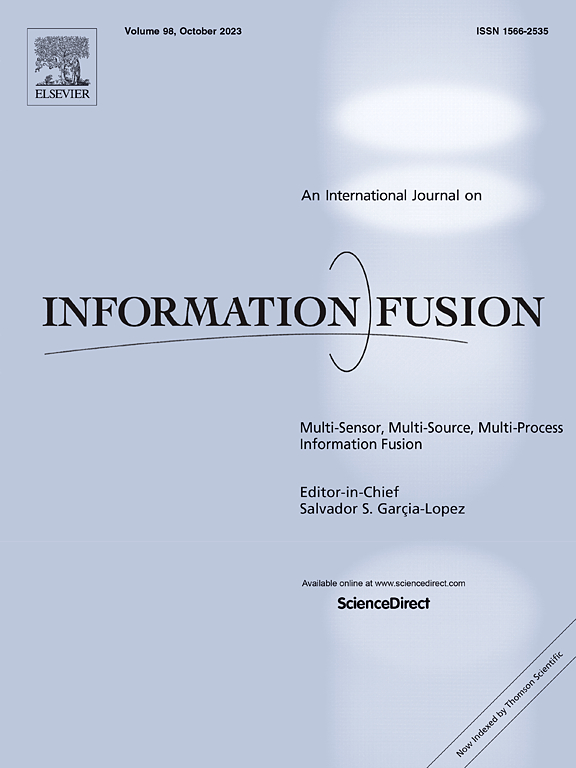TSCMamba: Mamba meets multi-view learning for time series classification
IF 14.7
1区 计算机科学
Q1 COMPUTER SCIENCE, ARTIFICIAL INTELLIGENCE
引用次数: 0
Abstract
Multivariate time series classification (TSC) is critical for various applications in fields such as healthcare and finance. While various approaches for TSC have been explored, important properties of time series, such as shift equivariance and inversion invariance, are largely underexplored by existing works. To fill this gap, we propose a novel multi-view approach to capture patterns with properties like shift equivariance. Our method integrates diverse features, including spectral, temporal, local, and global features, to obtain rich, complementary contexts for TSC. We use continuous wavelet transform to capture time–frequency features that remain consistent even when the input is shifted in time. These features are fused with temporal convolutional or multilayer perceptron features to provide complex local and global contextual information. We utilize the Mamba state space model for efficient and scalable sequence modeling and capturing long-range dependencies in time series. Moreover, we introduce a new scanning scheme for Mamba, called tango scanning, to effectively model sequence relationships and leverage inversion invariance, thereby enhancing our model’s generalization and robustness. Experiments on two sets of benchmark datasets (10+20 datasets) demonstrate our approach’s effectiveness, achieving average accuracy improvements of 4.01–6.45% and 7.93% respectively, over leading TSC models such as TimesNet and TSLANet.
TSCMamba: Mamba满足时间序列分类的多视图学习
多变量时间序列分类(TSC)对于医疗保健和金融等领域的各种应用至关重要。虽然已经探索了各种TSC方法,但时间序列的重要性质,如移位等变性和反转不变性,在很大程度上没有被现有的作品所探索。为了填补这一空白,我们提出了一种新的多视图方法来捕获具有移位等方差等属性的模式。我们的方法集成了多种特征,包括光谱、时间、局部和全局特征,以获得丰富的、互补的TSC上下文。我们使用连续小波变换捕捉时频特征,即使输入在时间上发生移位也保持一致。这些特征与时间卷积或多层感知器特征融合,以提供复杂的局部和全局上下文信息。我们利用Mamba状态空间模型进行高效和可扩展的序列建模,并捕获时间序列中的远程依赖关系。此外,我们引入了一种新的曼巴扫描方案,称为探戈扫描,有效地建立序列关系模型并利用反演不变性,从而增强了模型的泛化和鲁棒性。在两组基准数据集(10+20个数据集)上的实验证明了我们的方法的有效性,与领先的TSC模型(如TimesNet和TSLANet)相比,我们的方法的平均准确率分别提高了4.01-6.45%和7.93%。
本文章由计算机程序翻译,如有差异,请以英文原文为准。
求助全文
约1分钟内获得全文
求助全文
来源期刊

Information Fusion
工程技术-计算机:理论方法
CiteScore
33.20
自引率
4.30%
发文量
161
审稿时长
7.9 months
期刊介绍:
Information Fusion serves as a central platform for showcasing advancements in multi-sensor, multi-source, multi-process information fusion, fostering collaboration among diverse disciplines driving its progress. It is the leading outlet for sharing research and development in this field, focusing on architectures, algorithms, and applications. Papers dealing with fundamental theoretical analyses as well as those demonstrating their application to real-world problems will be welcome.
 求助内容:
求助内容: 应助结果提醒方式:
应助结果提醒方式:


